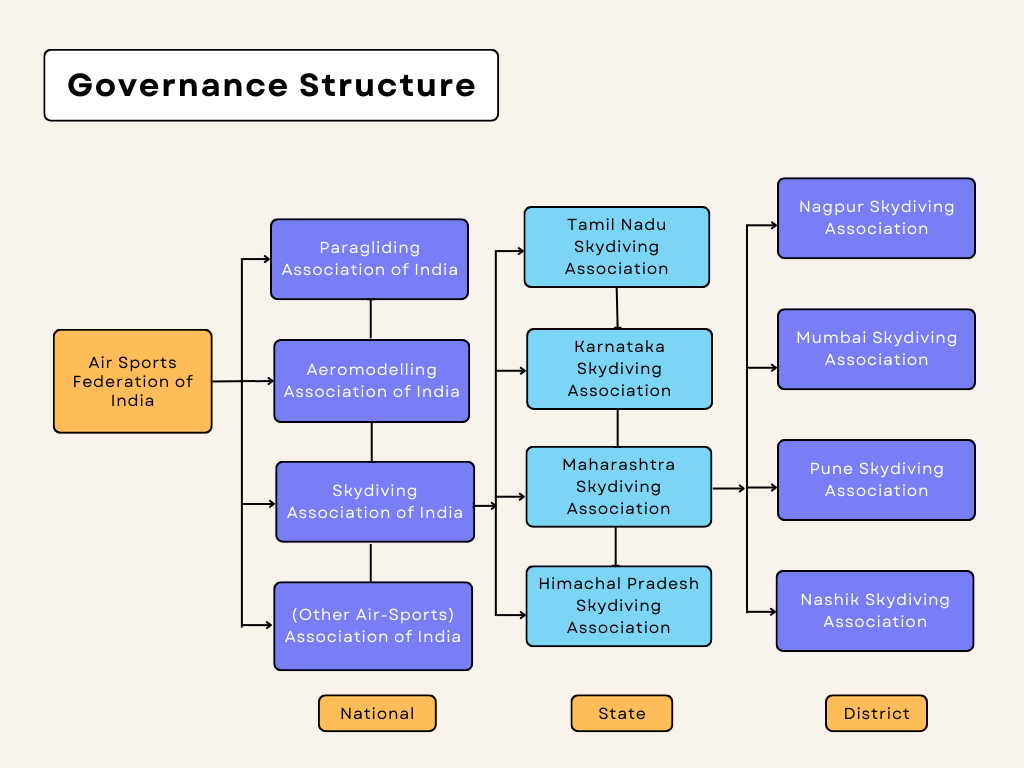Air Sports Law : A Safety Shield
Introduction
India is a country known for the countless sports played throughout its territories. Recently, the demand for adventurous sports has passionately promoted the growth of air sports activities such as air-racing, aerobatics, aeromodelling, hang gliding, paragliding, paramotoring and skydiving etc. Such sports have significantly developed in India due to its extensive geographical expanse, diverse landscape and suitable weather conditions. Therefore, in the past few years, India has turned into an overflowing scene for innumerable national and international tourists arriving to have fun and enjoy adventurous air sports. Recently, the Government of India has officially recognised “air sport” as an adventure sport and is promoting them among its citizen. Hence, there is a need for a proper reasonable national framework to regulate air sports activities and maintain the safety of the sportsperson.

Air sports activities are adventurous sports in the air and are opposed by the gravitational force of the earth. Therefore, air sports activities involve a much higher chance of risk than any other sports. According to a study by National Center for Biotechnology Information, though the risk of accidents during air sports activities is 0.26%, the accidents are very severe which either result in death or permanent disability for life. Sometimes the sportsperson even collides with objects like trees or mountains, drop out of the sky, gets lost in bad weather conditions, is struck by lightning or gets pulled up into the cloud.
National Air Sports Policy, 2022
Before the publication of the National Air Sports Policy, 2022, state like Goa and Uttarakhand has their own state policy related to air sports activities to regulate air sports among tourists. These policy has been insured and also ensure the safety of the tourists.
Subsequently, the Ministry of Civil Aviation released a draft National Air Sports Policy (NASP 2022) on 7th June 2022 for promoting air sports in India by encouraging participation and development of sporting equipment under the governance of the Federation Aeronautique Internationale (FAI), Switzerland.
The policy aims to provide a safe, accessible, affordable, comfortable and sustainable air sports ecosystem in the country which will help India to become the global hub of air sports by 2030. Therefore, the policy has recognised 11 air sports activities such as aerobatics, aeromodelling and model rocketry, amateur-built and experimental aircraft, ballooning, drones, gliding and powered gliding, hang gliding and powered hang gliding, parachuting (including skydiving, BASE1 jumping and wingsuits etc.), paragliding and paramotoring (including powered parachute trikes etc.), powered aircraft (including ultralight, microlight and light sports aircraft etc.); and rotorcraft (including autogyro).
The policy has specified a four-tier governance structure to be established for regulating air sports in India such as the Air Sports Federation of India (ASFI), National associations for individual air sports or a set of air sports, Regional or state and union territory level units of the national air sports associations and District level units of Regional or state and union territory air sports associations.
Under this policy, the Air Sports Federation of India was established as the apex governing body which is responsible to handle individual or group associations for each air sport such as the Skydiving Association of India, Paragliding Association of India, etc. All the persons and their equipment related to air sports activities are required to get registered at their respective air sports associations.
Air Sports Federation of India also represents India at the Federation Aeronautique Internationale and other international platforms related to air sports. Since air sports activities have been recognised by the International Olympic Committee (IOC), the Air Sports Federation of India has been directed to draft guidelines within 6 months from the date of publication of the National Air Sports Policy 2022 for the sportsperson which shall align with the National Sports Development Code of India (NSDCI), 2011 and subsequent notification of the Ministry of Youth Affairs and Sports.
Since the risk involved in air sports is quite higher, the air sports association has laid down the safety standards for equipment, infrastructure, personnel and training to ensure the safety of the sportsperson. Air Sports Federation of India also takes penal action in form of financial penalties, dismissal or suspension against air sports associations if the associations did not comply with safety standards. The Air Sports Association is responsible to coordinate with the Air Traffic Control (ATC) authority so that the way of civil or military aircraft is not interrupted.
Since the complex equipment for air sports such as aircraft, parachutes, helmets, batteries, GPS trackers and radio aids etc. are being imported and the rate of Goods and Services Tax (GST) imposed is between 18%-28% that may affect the affordability of the air sports activities. Therefore, the Government has levied a GST rate of 18% on balloons, gliders and other non-powered aircraft in order to make access to air sports activities affordable and accessible to the common public. Thus, the rate of GST on all air sports equipment is less than 5%.
Need for Changes
The National Air Sport Policy, 2022 has some general loopholes that can not be overlooked.
Though in the case of Priya Paul vs Bharti Axa General Ins. Co. Ltd. [Civil Appeal No. 3346 OF 2018], the Supreme Court of India cited the definition of “aircraft” under Section 2(1) of the Aircraft Act, 1934 and Section 3(1) of the Aeronautics Act, 1985 of Canada where the definition of aircraft includes flying air machines, balloons, airships, kites and gliders. Moreover, Section 6(2) of the Aircraft Act, 1934 also mentions the liability to pay compensation to any person who suffers injury due to the aircraft.
But in the National Air Sport Policy, 2022, there is no specific provision regarding liability in case of any inevitable mishaps due to the negligence of the association or trainer or punishment for the sportsperson if he/she is found to have been indulged in any unethical practice. The policy also has no provision for regularly upgrading and maintaining air sports equipment.
Author: Neelam Prusty and Ajay Kacher, in case of any queries please contact/write back to us at support@ipandlegalfilings.com or IP & Legal Filing.

